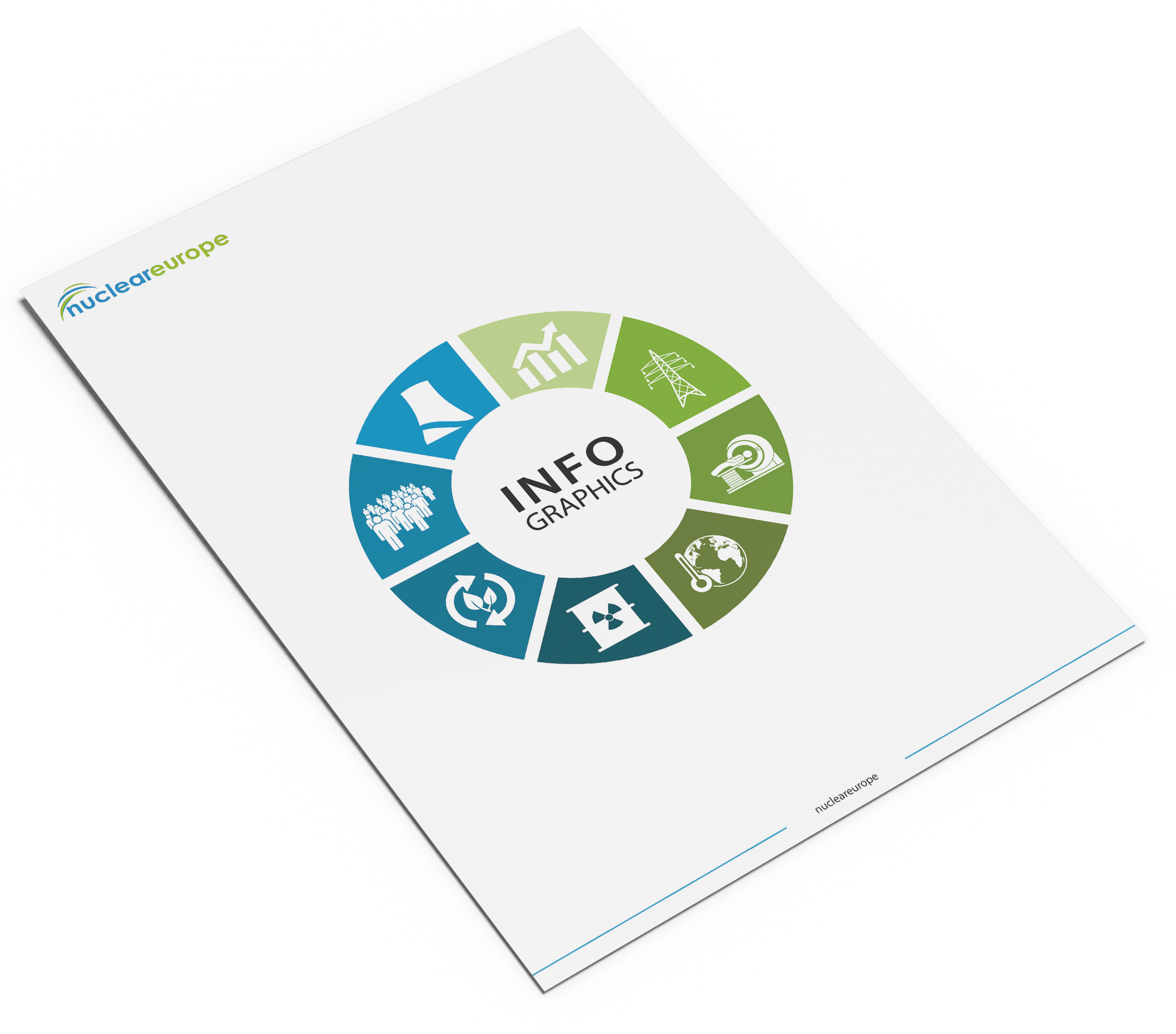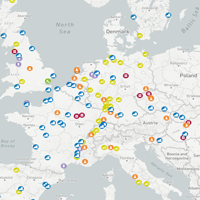Nuclear generates almost half of Europe’s low-carbon electricity
%
Facts & figures
nucleareurope infographics highlight nuclear power’s benefits in Europe in terms of key issues such as climate change mitigation, economics, security of supply and competitiveness. They provide the facts about nuclear energy in Europe in a concise and visually appealing way. Did you know for instance that nuclear energy provides half of Europe’s low-carbon electricity?
Download the Pocket Guide below and get an overview of nuclear’s contribution to Europe’s economy.
nucleareurope’s interactive map of nuclear facilities
Want to know more about nuclear facilities across Europe? Then check out our interactive map!
View live CO2 emissions of the European electricity production
This map shows in real time where your electricity comes from and how much CO2 was emitted to produce it.
Imports and exports between countries have also been taken into account.
Nuclear energy generates electricity in 14 of the 27 EU Member States, and currently provides 25% of Europe’s electricity and 50% of its low carbon electricity.
The electricity map has been created and is being run by Olivier Corradi, Tomorrow.
Follow the assessment of countries’ contributions to the Paris Agreement
The Climate Action Tracker (CAT) is an independent science-based assessment, which tracks the emission commitments and actions of countries.
It provides an up-to-date assessment of individual national pledges, targets and Intended Nationally Determined Contributions (INDCs) and currently implemented policy to reduce their greenhouse gas emissions.
The CAT is based on data submitted by 32 countries (covering 80% of global emissions) and focuses on:
- Impact of (I)NDCs or other commitments on emissions in 2020, 2025 and 2030 and beyond;
- Effect of current policies on emissions;
- Fair share: whether the emission reductions in the INDCs represent a fair share of global effort to limit warming below 2°C.
The commitment of the parties to the Paris Agreement to hold the increase in global average temperatures to ‘well below 2 degrees Celsius’ above pre-industrial levels and to ‘pursue efforts’ to limit the temperature increase to 1.5 degrees Celsius requires the use of nuclear energy. The additional commitment by all Parties to limit greenhouse gas emissions ‘as soon as possible’ is only feasible through the use of all low-carbon technologies, including the continued use of nuclear energy.
The tracker has been prepared and is being run by the CAT Consortium (Climate Analytics, Ecofys, NewClimate Institute, Potsdam Institute for Climate Impact Research).


